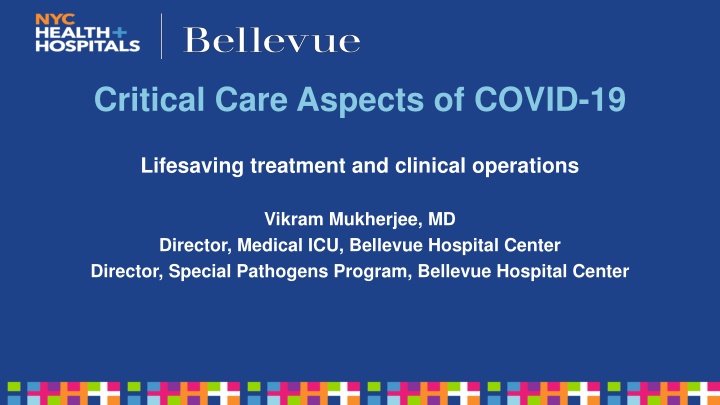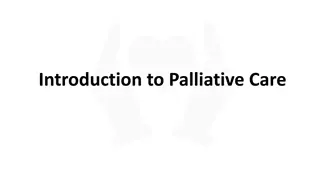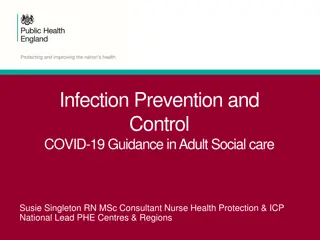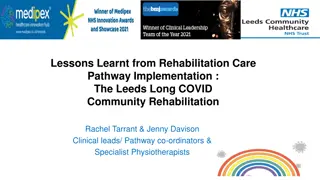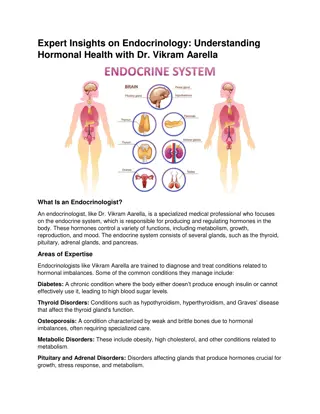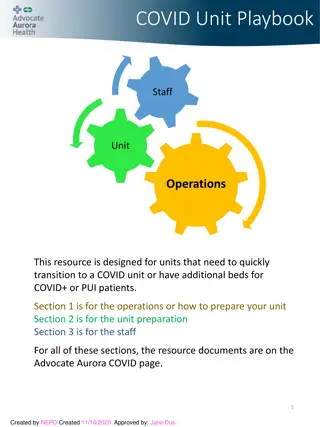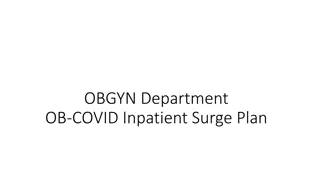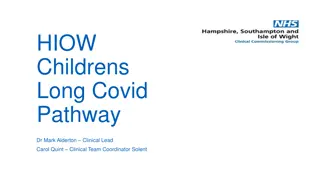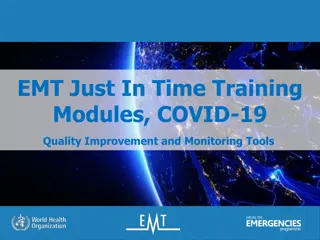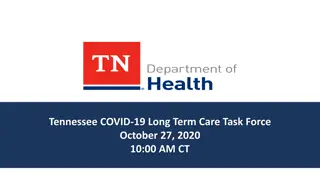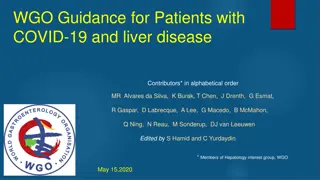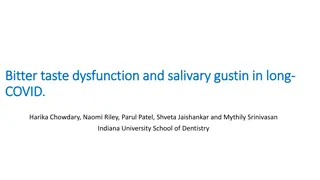Critical Care Aspects of COVID-19 - Insights from Dr. Vikram Mukherjee, MD
Insights on critical care aspects of COVID-19, including clinical impressions, disease progression, treatment protocols for severe ARDS, management of cytokine release syndrome, and challenges faced in managing patients with COVID-19. Dr. Vikram Mukherjee shares observations and strategies based on experiences at Bellevue Hospital Center.
Download Presentation

Please find below an Image/Link to download the presentation.
The content on the website is provided AS IS for your information and personal use only. It may not be sold, licensed, or shared on other websites without obtaining consent from the author.If you encounter any issues during the download, it is possible that the publisher has removed the file from their server.
You are allowed to download the files provided on this website for personal or commercial use, subject to the condition that they are used lawfully. All files are the property of their respective owners.
The content on the website is provided AS IS for your information and personal use only. It may not be sold, licensed, or shared on other websites without obtaining consent from the author.
E N D
Presentation Transcript
Critical Care Aspects of COVID-19 Lifesaving treatment and clinical operations Vikram Mukherjee, MD Director, Medical ICU, Bellevue Hospital Center Director, Special Pathogens Program, Bellevue Hospital Center
Clinical aspects: overall impressions so far Full spectrum of ages and ethnicities Many more young patients than anticipated Gender M>F Common progression of disease 25% of hospital admissions admitted to ICU
Onset of symptoms Presentation to ER Admitted to floor Worsening hypoxia Admitted to ICU Severe ARDS Cytokine Storm Renal failure Ongoing Death ventilator and RRT needs
Onset of symptoms Presentation to ER Admitted to floor Worsening hypoxia Onset of symptoms Presentation to ER Admitted to ICU Severe ARDS Cytokine Storm Renal failure Ongoing Death ventilator and RRT needs
Severe ARDS Conventional management: Trial of HFNC Lung Protective Strategy High peep/fio2 ladder, though some patients improve on lower PEEPs Account for insensible losses and undetected hypovolemia Recruitment Sustained hyperinflation method Attention to fluid balance Trial of antibiotics Neuromuscular blockade and RASS-4 sedation iNO for refractory hypoxia Manual proning
Severe ARDS Other issues CVL and A-line in most patients Prefer left IJ CVL Many have substantial sedation requirements Many need neuromuscular blockade to achieve ventilator dysynchrony Tracheostomy team with protocolized bedside PDT Plaquenil/Azithromycin Watch Qtc Family updates
Cytokine Release Syndrome Common to see the following a few days into ICU course Recurring marked fevers in the absence of obvious infectious source Tachycardia, tachypnea, diaphoresis Elevated CRP, ferritin, LDH, IL-6 Trend daily (except IL-6) D-Dimer Progression to renal failure ~50% of our ICU patients are in acute renal failure requiring RRT Unclear on how to mitigate Steroids Risks Anti- IL6 No clear data on efficacy
Role of Tocilizumab Tocilizumab (anti-IL6R) 400mg IV x1 for severe CRS MUST have: Confirmed SARS-CoV-2 Bilateral pulmonary infiltrates Need for supplemental O2 to maintain sat >92% or PaO2/FiO2 <300mmHg and at least 2 of following: CRP >100 or >50 but doubled in past 48hrs LDH >250 Ferritin >500 D-dimer >1000ng/mL Lymphocyte count <0.6x109/L Avoid in patients w/other active infections See page 3 BEFORE initiating immunomodulator
Other considerations No evidence based treatment Critical care support is the mainstay of therapy Altered standard of care Role of POCUS Things move slowly Has repercussions on management choices Levels of sedation Timing of invasive interventions
Clinical Operations Space Ability to cohort Need for negative pressure ICU capable beds Staff Strain on physician and nurses capacity Stuff PPE Equipment
MICU NSICU SPACE SICU CCU
COVID ICU COVID ICU COVID ICU SPACE [n=54] COVID ICU
STUFF INTUBATION KITS
STUFF MECHANICAL CPR INTUBATION KITS
STUFF MECHANICAL CPR Butterfly INTUBATION KITS
Stuff: unanticipated shortages IV pumps Cooling blankets CVVH machines Medications Fentanyl, cisatracurium
DONT SAY NO TO ANYONE! Orthopedic surgeons= Proning teams Outpatient Nurse Practitioners= CVVH support Anesthesia= procedure team (Airway, CVL, A-line, HD line, OG tube) ENT/Intervention Pulm= Tracheostomy Team Psych/Palliative Care= Family contact team Students= Write up papers team
Staffing Account for: Staff falling sick Low morale Sick call Stress on: Team building Lead by example Perform non-physician tasks Emergency credentialing
Have Plans B and C ready before Plan A runs out Surge Space Stuff Staff
Clinical care: no obvious right answers Levels of sedation Blocking the cytokine storm Central access Anticoagulation End of Life Care
Delegate and build autonomous teams Tracheostomy team Proning team Palliative care team Procedure team Renal Replacement Therapy Team Site manager team
Plan for staff well being Morale will take an inevitable hit HCWs falling sick Death Team building exercises Process groups Emphasize the smallest wins Recognize burnout among colleagues (and yourselves)
Build a community H+H experience Ability to handle surge Equipment sharing NYC ICU Community Internal data and process sharing Standardize care
